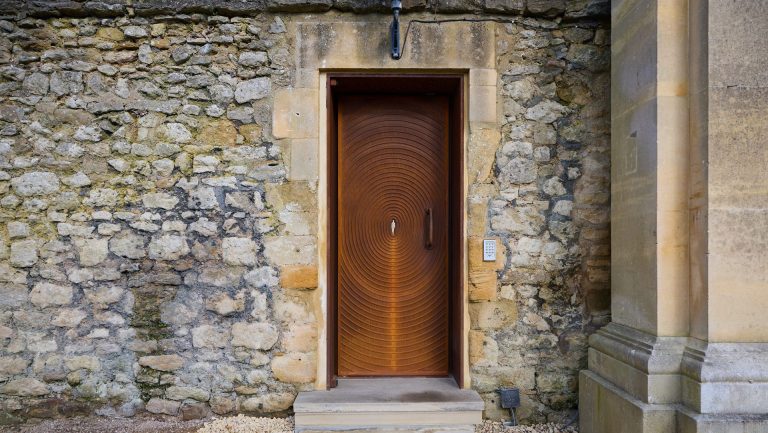On the surface, Jim Yeung might seem like any other undergraduate. A second-year maths student at The Queen’s College, he got a first in his prelims, looks forward to postgraduate study after his degree, and spends much of his free time playing the piano.
Only one thing sets him apart from his peers: he started studying at Oxford when he was only 15 years old. According to a Freedom of Information request made by Cherwell, that makes him one of the 237 Oxford students aged 17 and below.
Most universities in the UK permit undergraduates of any age – although under-18s are prohibited by law from engaging in the clinical contact required in the first year of most medicine degrees. Usually, however, universities put plenty of safeguards in place. Oxford Brookes, for instance, frequently offers deferred entry to students who apply for courses not ‘appropriate’ to their age; at the University of Bristol, underage students are barred from holding ‘positions of responsibility.’ Oxford does things differently. As Ruth Collier, then spokesperson for applications, told the Guardian in 2005: “If you’re the best student for the place and are 14 years old, then the general attitude is ‘so be it.’” Jim told me that tutors, lecturers and other students treat him the same as they treat his coursemates – exactly the way he wants it.
What few restrictions Oxford does place on underage students are usually the result of UK law. Students under the age of 18 are defined as children by the UN Convention on the Rights of the Child; colleges do not act in loco parentis (‘in the parent’s place’). To study at Oxford as a minor, you’ll need parents or other trusted adults living in the Oxfordshire area. You can also pay for a service like Oxford Guardians. For £945 a year, along with a £1,000 deposit and £170 registration fee, the Guardians will carry out most of the student’s logistical work for them, as well as granting the parents a termly visit and monthly updates. Underage students are also barred from living in student accommodation, due to the understandable worry of having children sharing bathrooms and kitchens with adults twice their age – particularly when those adults are not subject to detailed DBS checks. In Jim’s case, there was one easy solution to both these problems; his family purchased a home in Oxford and relocated from Hong Kong, where Jim lives with his parents alongside his studies.
But does Oxford go far enough in protecting the children among its student body? Alcohol can often pose particular problems, as college bars do not routinely check students for their ID. Usually, barmen are given a list of underage students from that college they are prohibited from serving before the academic year begins. But this system is far from perfect. One student who started studying when he was 16 told Cherwell he found an easy solution; going to other colleges’ bars, where he was seen as just another undergrad. His bod card was usually all he needed to get into college bops and club nights.
Student societies, meanwhile, often have no safeguards in place at all. Back in 2015, Oxford University Labour Club reached national news after a 17 year old got so drunk at an event he threw up on college property, shouting ‘Vote Labour’ and reciting Latin, before ending the night unable to walk. This incident was especially embarrassing since also in attendance was then Oxford East MP Andrew Smith.
Researching them, it’s hard not to notice just how many former child prodigies go on to reach not spectacular heights of achievement, but instead deep craters of despair. Not only are young geniuses disproportionately likely to have developmental conditions like autism spectrum disorder and mental health issues like depression, they can often find the unbearable pressure of high expectations too much to handle. Socialisation can be a particular issue; burying your head in GCSE textbooks from early adolescence might be good for your grades, but it’s rarely as positive for your social abilities. As one former prodigy put it: ‘I regret all the ways I never got to be a child because I was too busy being a child prodigy.’
As far as Oxford is concerned, there is no child prodigy nearly as famous as Ruth Lawrence. She won a place at St Hugh’s when she was only ten years old in 1981 and went on to get a First in her finals and finish her degree a year early, making her the youngest graduate of Oxford in recorded history. She quickly became nationally famous, her face and story plastered on the pages of every tabloid in the country.
But it never really seemed like she was in control; instead, her father, Henry Lawrence, was the one in the driving seat – literally, as he took her everywhere in a tandem bicycle. He went with her to lectures, classes, tutorials, and social events – at least until he was banned by St Hugh’s JCR from their common room. Even after she followed up her undergraduate degree with a DPhil in Mathematics, he went with her to Harvard University, where she became a fellow at 19 years old.
Ruth hadn’t even been Henry’s first attempt at creating a child genius. He had tried the same with the children of his first marriage, but his first wife found his overbearing methods too much, leaving him and taking their three kids. He remarried and Ruth’s birth soon followed. His second wife was more accommodating to his authoritarian methods which included a ban on the young Ruth having friends of her age, out of a worry that their ‘trivial conversation and pointless playing’ would stunt her academic development.
Ruth finally left her father behind in 1997, when she married Israeli mathematician Ariyeh Neimark and moved to the Jewish state. She became religiously observant, and now lives in relative obscurity as an Orthodox mother of four, working as a Maths Professor at the Hebrew University of Jerusalem.
Perhaps understandably, she has been reluctant to say much about her relationship with her father. All we do know is that her style of parenting is much more relaxed – she has publicly stated her wish for her children to be ‘normal,’ and mature ‘naturally.’ But Henry still remains unrepentant about his unorthodox methods, telling the Daily Mail in 2015 he raised Ruth properly: ‘The idea that it’s a time to mess around and do whatever they like is absolutely wrong. Childhood’s not a time to be playing around, but a time to be developing.’
But Ruth says she still enjoyed her time at Oxford. When I asked her about whether she thought that Oxford did enough to protect students like her, she said: ‘It’s a complex topic, and probably best that I don’t get involved in answering. I was very happy with my experiences at Oxford, but… Depending on how young the student and the situation of their family, there are clearly potential dangers, and it is not clear whether the university or colleges want to get involved.’
One child prodigy whose time at Oxford was unambiguously unhappy was Sufiah Yusof. She won a place studying Mathematics in 1997, when she was only 12 years old; one year later, her 12 year old sister and 16 year old brother began studying at Warwick. That made them the youngest group of siblings to ever study at university simultaneously. The news of Sufiah’s admittance was greeted with cheers, particularly in Malaysia, where she had distant ancestry – Sultans and ministers alike toasted her success, and countless teachers used her as an inspirational example for their pupils.
But after she took her final exams, she disappeared. It took the police 12 days to track her down, eventually finding her working in an internet cafe in Bournemouth. She refused to return to her parents, describing her father as having created a ‘living hell’ for her with his tyrannical disciplinarianism. She accused him of a litany of abuses – allegedly, for instance, he had forced her to work in freezing temperatures, since the cold supposedly better stimulated her brain.
For the next few years, she remained out of the media spotlight – until, in 2008, a journalist from the News of the World tracked her down, and found she was working as a £130 an hour prostitute in the backstreets of Salford. Posing as one of her clients, the journalist solicited her services and wrote his experiences up in the now defunct newspaper. Even by the standards of the Murdoch press, this showed a flagrant disregard for journalistic ethics.
It is hard to imagine just how traumatising all of this must’ve been for Sufiah. Fleeing abusive parents and ending up as a sex worker would be immensely difficult for almost anyone – but even worse when the whole affair is playing out across the pages of the national tabloids.
She certainly hasn’t been coy when it comes to giving her opinion on those tabloids. Her website accuses the British media of releasing ‘a tsunami of spiteful, dishonest, and abusive articles and pieces’ about her.
Stories like these were what led the Blair government to consider a blanket ban on students under the age of 18 going to university. But Olivia Smith, the Deputy CEO of Potential Plus UK – an organisation that supports highly gifted children and their parents – was glad these proposals were abandoned.
‘We don’t like the idea of people being held back,’ she told Cherwell. ‘We encounter parents that are struggling, because their children are doing their GCSEs but they’re writing at degree level, and GCSEs aren’t designed to accommodate that. We’ve got to say to people to level their answers down, and stop enjoying learning… It could be that holding the child back is more emotionally damaging than letting them get on with and trying university.’ For Potential Plus, decisions about sending under-18s to university are usually made on a case-by-case basis. On the one hand, university can be far more intellectually fulfilling for them; on the other hand, ‘we’ve got to consider social development,’ as Olivia put it. Usually, Potential Plus first encourage their clients to find intellectual stimulation outside of formal universities – taking extra A-Levels for instance, or using online resources like the Open University.
Olivia was also keen to stress that, despite the stereotypes, people who go to university earlier than usual aren’t always being driven by their overbearing tiger parents. ‘Often the kids are driving it, and the parents are there having to manage their kids’ expectations,’ as she put it. Where parents do find that their children are exceptionally gifted, however, she highlighted how important it is to take a balanced approach towards them: ‘The general risks are if you create a child’s identity to be all about one thing then that is going to crash and burn at some point, because there is no room for failure. We would remind all parents to praise everything about the child. We encourage them to build life skills – listening skills, teaching skills, creativity, problem solving. It’s easy for parents to get hooked up in their specific talents. But you want people to be well rounded.’
In some ways at least, Oxford might be a better environment for young prodigies than any other university. Younger students are obviously going to need more pastoral support than most of their peers; other, poorer universities can’t hope to compete with Oxford’s welfare services. And there are certainly few other places where eccentricities are accepted as readily as they are in Oxford.
I’ll admit, before researching this article, I had a fairly crude view of child prodigies, as socially awkward eccentrics unwillingly pressed into academic excellence by their overbearing parents. Certainly, that’s sometimes the case. But talking to Jim and Olivia, I realised how plenty of Oxford’s early birds are simply enormously talented and self-driven, and find in Oxford a place they can fit in better than anywhere else.
Back in the 1990s, after Ruth Lawrence’s story brought enormous publicity to the University, colleges found themselves in a kind of arms race; who could find the youngest student to let in? Thankfully, that has mostly ended by now. With today’s greater emphasis on student welfare and mental health, the youngest students at Oxford tend to be clustered more in the 15 to 16 age range, rather than the 12 to 13.
So, should children be allowed to study at Oxford? I’d say yes. But their admittance certainly ought to be approached with caution and, at the very least, colleges ought to keep a close eye on their welfare to stop another tragedy like Sufiah Yusof’s from ever occurring again.











